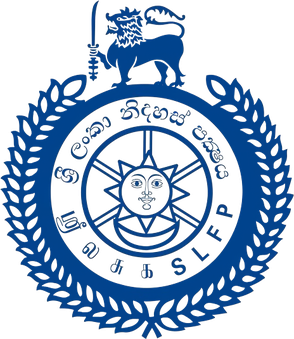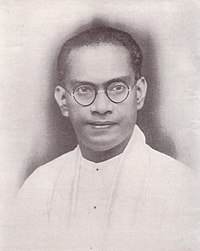
The history of Sri Lanka is unique because the relevance and richness of it extends beyond the areas of South Asia, Southeast Asia and the Indian Ocean. The early human remains which were found on the island of Sri Lanka date back to about 38,000 years ago.

Chandrika Bandaranaike Kumaratunga , commonly referred to by her initials CBK, is a Sri Lankan politician who served as the fourth executive president of Sri Lanka, from 12 November 1994 to 19 November 2005. She previously served as the prime minister from August to November 1994 and the chief minister of the Western Province from 1993 to 1994. She is the country's first and only female president to date and the country's second female prime minister. She was the leader of the Sri Lanka Freedom Party (SLFP) until the end of 2005.

Sirima Ratwatte Dias Bandaranaike, commonly known as Sirimavo Bandaranaike (මැතිණිය), was a Sri Lankan politician. She was the world's first female prime minister when she became Prime Minister of Sri Lanka in 1960. She chaired the Sri Lanka Freedom Party (SLFP) from 1960 to 1994 and served three terms as prime minister, two times as the chief executive, from 1960 to 1965 and from 1970 to 1977, and once again in a presidential system from 1994 to 2000, governing under the presidency of her daughter Chandrika Kumaratunga.

Junius Richard Jayewardene, commonly abbreviated in Sri Lanka as J.R., was a Sri Lankan lawyer, Public official and a stateman who served as Prime Minister of Sri Lanka from 1977 to 1978 and as the second President of Sri Lanka from 1978 to 1989. He was a leader of the nationalist movement in Ceylon who served in a variety of cabinet positions in the decades following independence. A longtime member of the United National Party, he led it to a landslide victory in 1977 and served as prime minister for half a year before becoming the country's first executive president under an amended constitution.

Solomon West Ridgeway Dias Bandaranaike, also known as "The Silver Bell of Asia", was a Ceylonese statesman who served as the fourth Prime Minister of the Dominion of Ceylon, serving from 1956 until his assassination. The founder of the left-wing and Sinhalese nationalist Sri Lanka Freedom Party, his tenure saw the country's first left-wing reforms.

The Lanka Sama Samaja Party, often abbreviated as LSSP, is a major Trotskyist political party in Sri Lanka. It was the first political party in Sri Lanka, having been founded in 1935 by Leslie Goonewardene, N.M. Perera, Colvin R. de Silva, Philip Gunawardena and Robert Gunawardena. It currently is a member of the main ruling coalition in the government of Sri Lanka and is headed by Tissa Vitharana. The party was founded with Leninist ideals, and is classified as a party with socialist aims.

The Sri Lanka Freedom Party is one of the major and most well known political parties in Sri Lanka. It was founded by S. W. R. D. Bandaranaike in 1951 and, since then, has been one of the two largest parties in the Sri Lankan political arena. It first came to power in 1956 and since then has been the predominant party in government on a number of occasions. The party is generally considered as having a democratic socialist or progressive economic agenda and is often associated with nationalist Sinhalese parties. The party follows a Non-Aligned foreign policy but always had close ties to socialist nations.

Parliamentary elections were held in Ceylon in 1956. They were a watershed in the country's political history, and was the first elections fought to realistically challenge the ruling United National Party. The former Leader of the House, S.W.R.D. Bandaranaike who was passed over after the death of the first Prime Minister D. S. Senanayake, crossed over to the opposition to form the Sri Lanka Freedom Party to launch his bid for Prime Minister.

Snap parliamentary elections were held in Ceylon in July 1960.

The 1958 anti-Tamil pogrom and riots in Ceylon, also known as the 58 riots, refer to the first island-wide ethnic riots and pogrom to target the minority Tamils in the Dominion of Ceylon after it became an independent dominion from Britain in 1948. The riots lasted from 22 May until 29 May 1958 although sporadic disturbances happened even after the declaration of emergency on 27 May 1958. The estimates of the murders range, based on recovered bodies, from 158 to 1,500. Although most of the victims were Tamils, Sinhalese and their property were also affected by retaliatory attacks by Tamil mobs throughout the Batticaloa and Jaffna districts. As the first full-scale race riot in the country in over forty years, the events of 1958 shattered the trust the communities had in one another and led to further polarisation.

Samuel James Veluppillai Chelvanayakam was a Ceylonese lawyer, politician and Member of Parliament. He was the founder and leader of the Illankai Tamil Arasu Kachchi (ITAK) and Tamil United Liberation Front (TULF) and a political leader of the Ceylon Tamil community for more than two decades. Chelvanayakam has been described as a father figure to Ceylon's Tamils, to whom he was known as "Thanthai Chelva".
The origins of the Sri Lankan Civil War lie in the continuous political rancor between the majority Sinhalese and the minority Sri Lankan Tamils. According to Jonathan Spencer, a social anthropologist from the School of Social and Political Studies of the University of Edinburgh, the war is an outcome of how modern ethnic identities have been made and re-made since the colonial period, with the political struggle between minority Tamils and the Sinhalese-dominant government accompanied by rhetorical wars over archeological sites and place name etymologies, and the political use of the national past.

Ceylon was an independent country in the Commonwealth of Nations from 1948 to 1972, that shared a monarch with other dominions of the Commonwealth. In 1948, the British Colony of Ceylon was granted independence as Ceylon. In 1972, the country became a republic within the Commonwealth, and its name was changed to Sri Lanka.
The Soulbury Commission, announced in 1944 was, like its predecessor, the Donoughmore Commission, a prime instrument of constitutional reform in British Ceylon. The immediate basis for the appointment of a commission for constitutional reforms was the 1944 draft constitution of the Board of Ministers, headed by D.S. Senanayake. This commission ushered in Dominion status and Independence to Sri Lanka in 1948. Its constitutional recommendations were largely those of the 1944 Board of Ministers' draft, a document reflecting the influence of Senanayake and his main advisor, Sir Ivor Jennings.
Sri Lankan Tamil nationalism is the conviction of the Sri Lankan Tamil people, a minority ethnic group in the South Asian island country of Sri Lanka, that they have the right to constitute an independent or autonomous political community. This idea has not always existed. Sri Lankan Tamil national awareness began during the era of British rule during the nineteenth century, as Tamil Hindu revivalists tried to counter Protestant missionary activity. The revivalists, led by Arumuga Navalar, used literacy as a tool to spread Hinduism and its principles.
The Bandaranaike–Chelvanayakam Pact was an agreement signed between the Prime Minister of Sri Lanka S. W. R. D. Bandaranaike and the leader of the main Tamil political party in Sri Lanka S. J. V. Chelvanayakam on July 26, 1957. It advocated the creation of a series of regional councils in Sri Lanka as a means to giving a certain level of autonomy to the Tamil people of the country, and was intended to solve the communal disagreements that were occurring in the country at the time.

The 1956 anti-Tamil pogrom, also known as the Gal Oya riots, was the first organised pogrom against Sri Lankan Tamils in the Dominion of Ceylon. It began with anti-Tamil rioting in Colombo, followed by anti-Sinhalese rioting in Batticaloa. The worst of the violence took place in the Gal Oya valley, where local majority Sinhalese colonists and employees of the Gal Oya Development Board commandeered government vehicles, dynamite and weapons and massacred minority Tamils. It is estimated that over 150 people, mostly Tamils, had died during the violence. The police and army were eventually able to bring the situation under control.

Ilankai Tamil Arasu Kachchi is a Sri Lankan political party which represents the Sri Lankan Tamil ethnic minority in the country. It was originally founded in 1949 as a breakaway faction of the All Ceylon Tamil Congress (ACTC). In 1972, ITAK merged with the ACTC and Ceylon Workers' Congress (CWC) to form the Tamil United Front, which later changed its name to the Tamil United Liberation Front (TULF). ITAK remained dormant until 2004 when a split in the TULF resulted in ITAK being re-established as an active political party. ITAK is a constituent party of the Tamil National Alliance.

Konara Mudiyanselage Podiappuhamy Rajaratne was a Ceylonese lawyer, politician and parliamentary secretary.
The Eksath Bhikkhu Peramuna was an umbrella organization consisting of two associations of Buddhist monks founded in 1956 in the Dominion of Ceylon to promote Sinhalese Buddhist interests in politics. It campaigned against the United National Party (UNP) and helped to bring the Mahajana Eksath Peramuna to power in the 1956 general election. It became defunct following the assassination of Prime Minister S. W. R. D. Bandaranaike.













